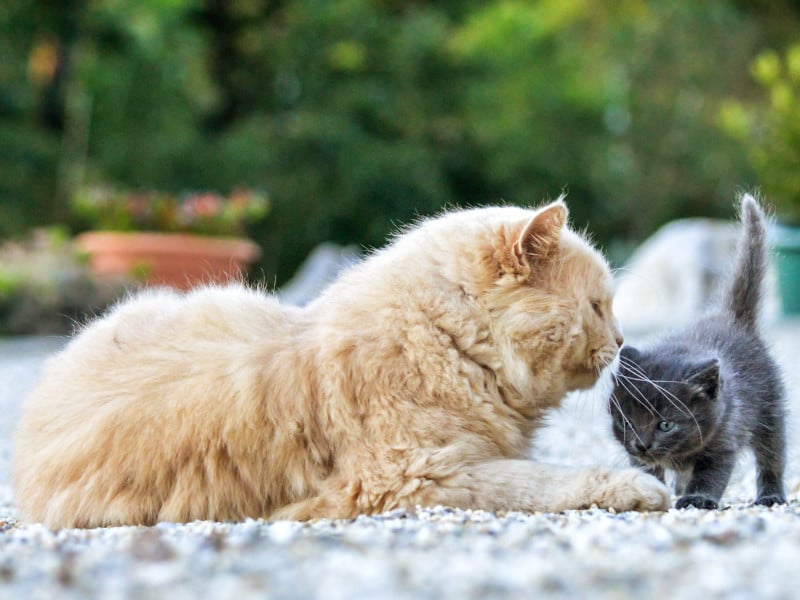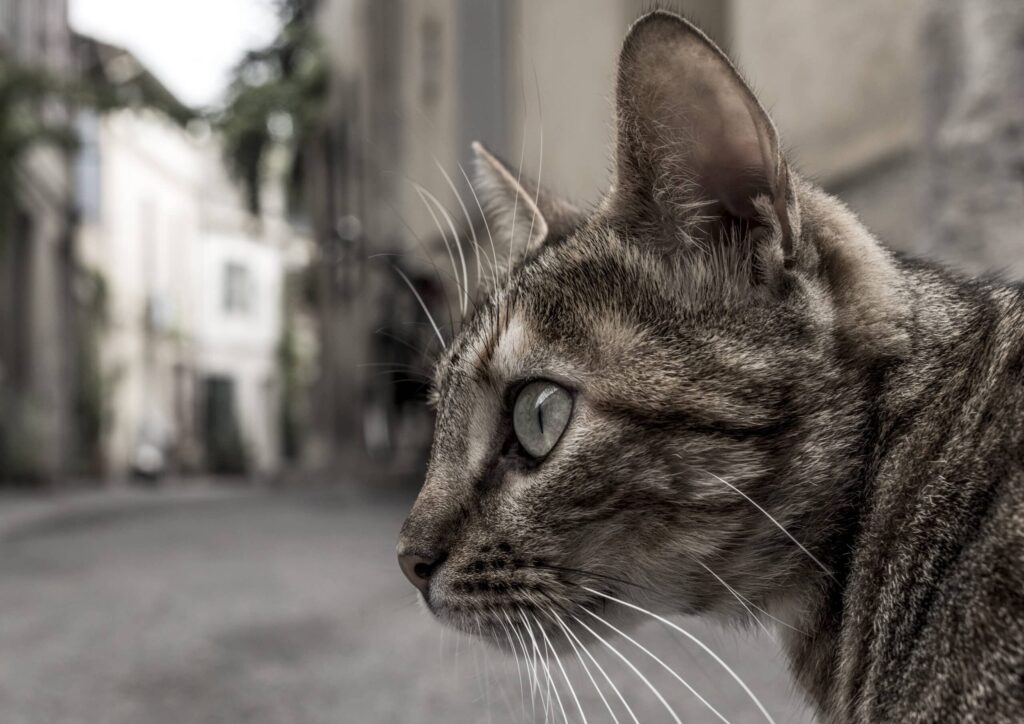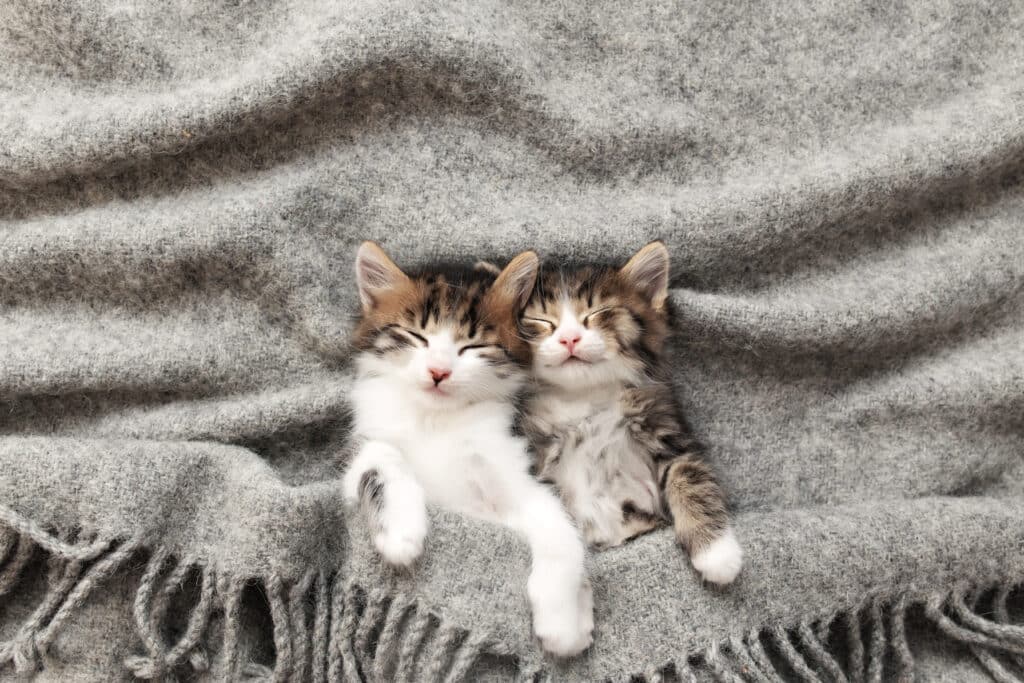
How to Introduce a Kitten to a Cat
Cats are territorial creatures that are just as likely to see a new kitten as a threat rather than a friend. In this article, you’ll learn how to introduce a kitten to a cat safely.
When introducing a new kitten to a home with an existing cat, allow for a gradual and controlled introduction. Any effort to speed things along will likely only serve to lengthen the process.
It may require superhuman patience on your part, but if you persist, you’ll achieve a harmonious transition for everyone involved.
Your new kitten needs its own space
Start by preparing a separate space for the kitten before it arrives. Choose a spare room that you can shut off from the rest of your house. It’s essential that your existing cats can’t enter, and that your new arrival can’t escape.
Before your new kitten arrives, this room must be furnished with all the necessary amenities…

A feeding area

A drinking area

Litter tray

Plenty of Toys

Hiding places

Places to climb
You’ll discover more ideas about what to put in, and how to set up, your new kitten’s “Arrival Room” in CatInfo.net’s extensive checklist.
By giving your new kitten a space of its own for several weeks, your existing cats have time to adjust to the scent and presence of the newcomer. Becoming accustomed to the kitten’s scent plays an important role when it comes to ensuring acceptance of your new ball of fluff.
Scent exchange
When looking at how to introduce a kitten to a cat, be prepared to think with your nose! Cats rely heavily on their sense of smell to communicate and establish territory.
To help familiarize the adult cat with the new kitten’s scent, and vice versa, engage in scent exchange activities. Rub a soft cloth on the kitten and then place it near the adult cat’s resting areas, and vice versa.
If you regularly brush your existing cat, get the kitten accustomed both to brushing and the scent of your cat’s smell by having them share the same brush.
This gradual introduction of scents helps them become accustomed to each other before face-to-face interactions.
Ideally, your existing cats won’t see the kitten until they’ve had several encounters with its scent and grown accustomed to the smell. This also helps to build curiosity in the lead-up to the visual encounter.
Controlled visual encounters
Once the adult cats and the new kitten have become accustomed to each other’s scents, it’s time to move on to controlled visual encounters.
Use a baby gate or a screen door to create a physical barrier that allows them to see and observe each other without direct physical contact. That way, they can start getting used to the sight of one another without feeling threatened.
If possible, feed your cat and kitten at the same time, with the door between them. That way, they each get to have several positive experiences in each other’s presence.
Positive reinforcement
During the entire introduction process, be sure to reward positive behavior with treats, praises, and gentle strokes. This reinforcement helps to create positive associations with the presence of the new kitten.
Rewarding adult cats for calm and non-aggressive behavior will encourage a more peaceful transition as they adjust to the presence of your new kitten.
Supervised physical interactions
Once the cats have shown signs of tolerance and curiosity, you can gradually progress to supervised physical interactions.
Start by allowing short, supervised visits where the cat and kitten can interact with each other in a controlled manner.
Keep these sessions short initially and gradually increase their duration as they grow more comfortable with each other. Always closely monitor their behavior and be prepared to intervene if any aggression occurs.

Equal attention and resources
To prevent the adult cats from feeling neglected, jealous, or threatened by the newcomer, ensure they continue to receive their regular attention, playtime, and affection.
Maintain their usual routines and provide separate resources like litter boxes, food, and water bowls to avoid competition.
Go out of your way to assure existing cats they remain valued members of the family. By doing so, you help alleviate any potential resentment.
Patience and time
Remember, introducing a new kitten to adult cats is a process that requires patience and time. Each cat is unique, and the timeline for acceptance can vary.
Some cats may adjust quickly, while others may take several weeks or months. Respect their individual pace and never force interactions.
Most cats can learn to coexist, and many even go on to form strong bonds.
How to Introduce a Kitten to a Cat and Build Strong Bonds
Introducing a new kitten to a household with adult cats requires careful planning, patience, and a gradual approach. By following the tips mentioned above and respecting each cat’s boundaries, you can create an environment where all feline members can peacefully coexist.
With time, love, and attention, your furry family members will likely develop strong and rewarding relationships, enriching all of your lives in the process.
See also
- CatInfo.net’s deep dive into the subject of how to introduce a new cat to your home.
- Our useful arrival room checklist. Its list of resources is useful for anyone who wants to know how to introduce a kitten to a cat.
- Get your cat-related questions answered in the “Ask CatInfo.net” group.












